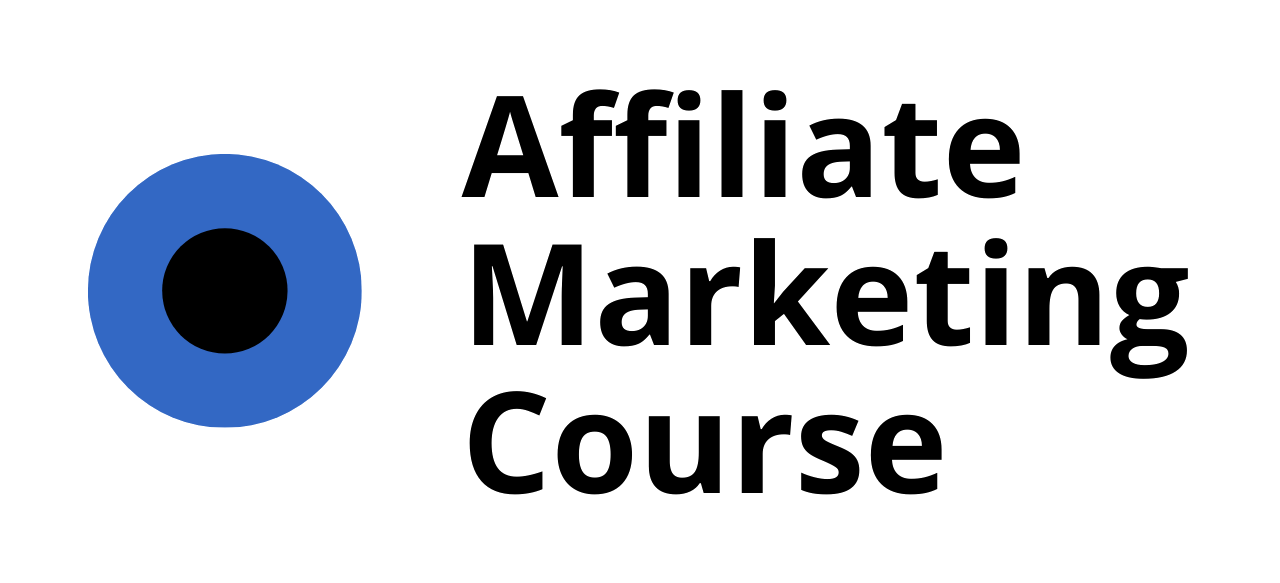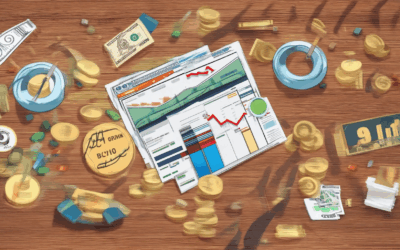In the dynamic world of digital advertising, affiliate marketing emerges as a powerful tool for publishers looking to maximize their earnings. With the ever-evolving landscape of online content consumption, affiliate programs offer a unique opportunity to monetize your platform effectively. Whether you’re aiming to earn a steady $100 a day or exploring new avenues like promoting books, this guide delves into the strategies, networks, and tools that can help you thrive in the affiliate marketing space. From understanding the basics to leveraging cutting-edge trends, we cover everything you need to know to stay ahead in this competitive field. Join us as we uncover the secrets to unlocking your full potential with affiliate marketing for publishers in 2024.
Key Takeaways
- Publishers are essential for affiliate marketing success, driving significant revenue opportunities.
- Diverse publishing formats, from blogs to YouTube, can maximize affiliate earnings.
- Affiliate programs rely on publishers to connect with targeted audiences and boost conversions.
- Strategic planning and audience engagement are key to succeeding with book affiliate programs.
- Effective strategies include SEO optimization, content creation, and consistent audience interaction.
- Affiliates act as both content creators and advertising intermediaries, facilitating successful partnerships.

How to Become a Publisher in Affiliate Marketing
Becoming a publisher in affiliate marketing requires a strategic approach to attract an audience and effectively promote products or services. Here’s a step-by-step guide to help you get started:
- Choose Your Niche
- Pick a specific niche or topic that aligns with your interests and expertise.
- Consider factors like your target audience’s needs, preferences, and popular topics in your chosen area.
- Build Your Audience
- Start by creating content around your niche using platforms like blogs, YouTube, or social media accounts.
- Share valuable insights, tutorials, and reviews to attract and engage your audience.
- Use platforms like Instagram, Pinterest, or TikTok to reach visual learners.
- Create High-Quality Content
- Write detailed articles, guides, and product reviews that provide real value to your readers.
- Include helpful tips, step-by-step instructions, and personal experiences to make your content relatable.
- Use multimedia elements like images, videos, and infographics to enhance your content.
- Monetize Your Content
- Sign up for affiliate programs that match your niche. Some popular networks include Awin , CJ Affiliate , and ShareASale .
- Apply to become an affiliate for brands relevant to your audience. For example, if you’re focusing on health and wellness, apply to programs like HealthHub .
- Place affiliate links and banners on your website, blog, or social media profiles.
- Promote products or services in a way that feels natural and provides value to your audience.
- Optimize for SEO
- Use keywords related to your niche to make your content searchable.
- Write SEO-friendly titles and meta descriptions to attract clicks.
- Internal link to your own content to improve your site’s ranking.
- Stay updated on the latest SEO trends and algorithms to maintain your site’s visibility.
- Stay Compliant and Professional
- Read and understand the terms and conditions of the affiliate programs you join.
- Disclose your affiliate relationships clearly in your content to build trust with your audience.
- Avoid promoting products or services that don’t align with your brand values or audience’s interests.
- Learn and Adapt
- Continuous learning is key to staying competitive in affiliate marketing.
- Take courses or read books to improve your skills in content creation, SEO, and digital marketing.
- Monitor your campaign performance and adjust your strategies based on results and feedback.
By following these steps, you can establish yourself as a successful affiliate publisher and grow your audience while earning a steady income stream.
Can You Make $100 a Day with Affiliate Marketing?
Yes, it’s possible to make $100 a day with affiliate marketing, but it requires dedication, strategic planning, and consistency. Here’s a step-by-step guide to achieving this goal:
1. Choose the Right Affiliate Network
- High-Paying Networks : Join affiliate programs with competitive commission rates. Examples include Amazon Associates (10% commissions), ClickBank (up to 75%), and ShareASale (varies by merchant).
2. Target a Niche You’re Passionate About
- Niche Selection : Focus on a niche where you have expertise or genuine interest. This helps in creating authentic and valuable content, which is crucial for attracting a loyal audience.
3. Build an Audience
- Content Creation : Start a blog, YouTube channel, or podcast focused on your chosen niche. Create content that provides value, such as reviews, tutorials, or guides.
- Social Media Engagement : Utilize platforms like Instagram, Pinterest, and TikTok to share visually appealing content that aligns with your niche. Engage with your audience to build trust and rapport.
4. Leverage SEO and Traffic Generation
- Search Engine Optimization : Optimize your blog or website with relevant keywords, meta descriptions, and alt texts to improve search engine visibility.
- Drive Organic Traffic : By ranking higher in search results, you can attract more visitors to your content, increasing the likelihood of clicks on your affiliate links.
5. Implement Email Marketing
- Email List Building : Collect email addresses through lead magnets or opt-in forms. Send newsletters featuring exclusive deals, product launches, or updates to keep your audience engaged and motivated to purchase through your links.
6. Optimize Conversion Rates
- A/B Testing : Experiment with different landing pages and call-to-action phrases to maximize conversions. Consider offering coupons or discounts to incentivize purchases through your affiliate links.
7. Explore Additional Monetization Strategies
- Diversify Income Streams : Incorporate advertising, sponsored content, or sell your own products to complement your affiliate income. Ensure these strategies align with your audience’s interests and don’t dilute your affiliate efforts.
8. Stay Consistent and Adapt
- Long-Term Commitment : Understand that building a successful affiliate marketing business takes time. Consistently create valuable content, engage with your audience, and analyze your performance to refine your strategies.
9. Legal Compliance
- Disclosures and Transparency : Clearly disclose your affiliate relationships to maintain trust with your audience. Adhere to regulations like the FTC disclosure requirements to avoid legal issues.
10. Learn from Success Stories
- Inspiration and Insights : Study successful affiliate marketers to gain insights into effective techniques and mindset. Set realistic goals based on their experiences and journeys.
By following these steps, you can systematically work towards earning $100 a day through affiliate marketing. Remember, persistence, adaptability, and a focus on delivering value to your audience are key to long-term success.

What is the Highest Paying Affiliate Program?
The highest paying affiliate programs vary based on the industry and niche, but some well-known programs offer significant earning potential. Here are some top options:
- Amazon Associates : Offers a standard commission rate of 10% on eligible sales, making it a popular choice for many affiliates.
- ShareASale : Known for its competitive rates, with commissions ranging up to 15% on certain products.
- ClickBank : Specializes in high-ticket digital products, offering commissions as high as 75% on select items.
- Rakuten Advertising (formerly LinkShare) : Provides competitive rates, typically around 12% for eligible promotions.
- CJ Affiliate : Offers commissions up to 21% on a variety of products, particularly in the retail and finance sectors.
- Shopify Affiliate Program : Commissions can reach up to 20% for referring new Shopify e-commerce stores.
- Leadpages Affiliate Program : Offers a commission rate of up to 30% for promoting their digital marketing tools.
- Ahrefs Affiliate Program : Provides a commission rate of up to 40% for promoting their SEO and marketing software.
To maximize your earnings, consider focusing on niches with higher commission rates and promoting high-ticket or subscription-based products. Additionally, ensure you fully understand the terms and conditions of each program before joining to align your strategy with their requirements.

What is Publisher in Affiliate Marketing?
An affiliate publisher is an individual or entity that creates and shares content to promote affiliate offers. They play a vital role in affiliate marketing by reaching audiences with affiliate links and helping advertisers grow their sales.
Types of Affiliate Publishers
- Bloggers : Create content like product reviews, tutorials, and guides, often incorporating affiliate links to earn commissions.
- YouTube Creators : Produce video content showcasing products, services, or lifestyles, frequently including affiliate links in descriptions or annotations.
- Social Media Influencers : Share sponsored posts, product reviews, or recommendations on platforms like Instagram, TikTok, or Pinterest, often with affiliate links.
- Content Creators : Write articles, podcasts, or videos focused on specific niches, embedding affiliate links to monetize their content.
- Niche Site Owners : Build websites dedicated to particular topics or industries, using affiliate marketing as a primary revenue source.
Importance of Publishers in Affiliate Marketing
Publishers are essential because they connect affiliates with their target audience. By creating valuable, engaging content, publishers help drive traffic and conversions for affiliate programs. Their role ensures that affiliate marketing efforts reach a broader audience and contribute to the success of affiliate campaigns.
[Continue reading about affiliate marketing course tips and strategies on our website
Can I Do Affiliate Marketing for Books?
Yes, affiliate marketing for books is a viable and rewarding endeavor. Here’s a structured guide to help you get started:
Steps to Start Affiliate Marketing for Books
- Choose the Right Affiliate Program
- Sign up for well-known programs like Amazon Associates, Barnes & Noble Affiliates, or niche-specific programs for textbooks or children’s books.
- Look for programs offering competitive commissions and relevant product categories.
- Create a Presence
- Website/Blog: Develop a website or blog focused on book reviews, recommendations, or literary discussions. Include your affiliate links in articles or as part of your content.
- Social Media: Promote your affiliate links on platforms like Instagram, Facebook, and Twitter by sharing book reviews, author spotlights, or reading lists.
- YouTube Channel: Create video content such as book reviews or reading lists, incorporating affiliate links in descriptions.
- Email List: Build an audience through email marketing, sharing book suggestions and exclusive content.
- Content Creation Strategies
- Blogging: Regularly publish articles or lists that provide value, like “Best Books for X Genre” or “Top 10 Must-Reads.”
- Podcasts: Discuss various books in a podcast and include affiliate links in show notes or transcripts.
- Forums/Discussion Boards: Engage in communities where book enthusiasts gather, sharing your recommendations with your affiliate links.
- Target Your Audience
- Identify your target audience based on interests, whether it’s a specific genre, age group, or reading level.
- Tailor your content to appeal to their preferences, ensuring relevance and engagement.
- Optimize for SEO
- Use keywords related to books and genres to improve visibility in search engines.
- Utilize tools like Google Analytics to track traffic and optimize content effectiveness.
- Engage and Monetize
- Interact with your audience through comments, polls, and Q&A sessions to build trust.
- Stay updated on commission rates and program policies to maximize earnings.
- Legal Considerations
- Adhere to regulations like the FTC guidelines, disclosing affiliate relationships to maintain transparency.
- Build a Niche Presence
- Differentiate yourself by focusing on independent authors or small presses, offering a unique perspective compared to larger programs.
- Stay Consistent and Evolve
- Understand that success requires time and effort. Consistently create high-quality content and use analytics to refine your strategy.
By following these steps, you can effectively leverage affiliate marketing to promote books and build a loyal audience.

Is an affiliate a publisher or advertiser?
An affiliate is neither exclusively a publisher nor an advertiser but serves as a bridge between the two. Here’s a breakdown of their role:
- Publisher Role : Affiliates act similarly to publishers by creating content (such as product reviews, tutorials, or recommendations) to attract an audience. They use this content to promote products or services, often through tracking links.
- Affiliate Role : As promoters, affiliates generate commissions based on the actions of their audience, such as purchases made through their links.
- Advertiser Role : While not the direct advertiser, affiliates collaborate with advertisers to place their products or services in front of a target audience. Advertisers compensate affiliates based on the performance (e.g., conversions or sales) generated by their promotions.
In essence, affiliates facilitate the advertising process, acting as intermediaries between advertisers and consumers. They are not the advertisers themselves but partners in the advertising ecosystem, earning a commission for their efforts.




0 Comments